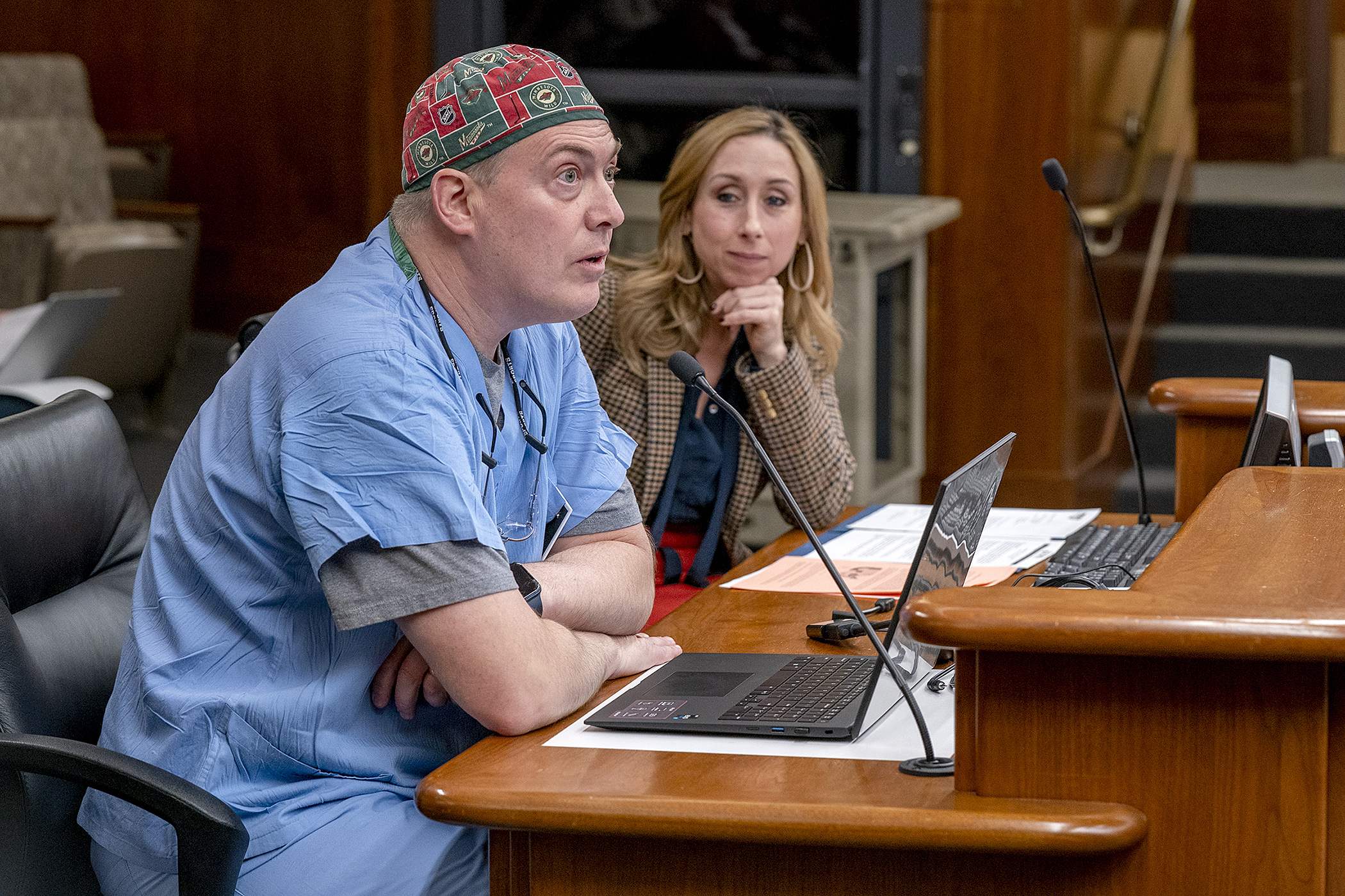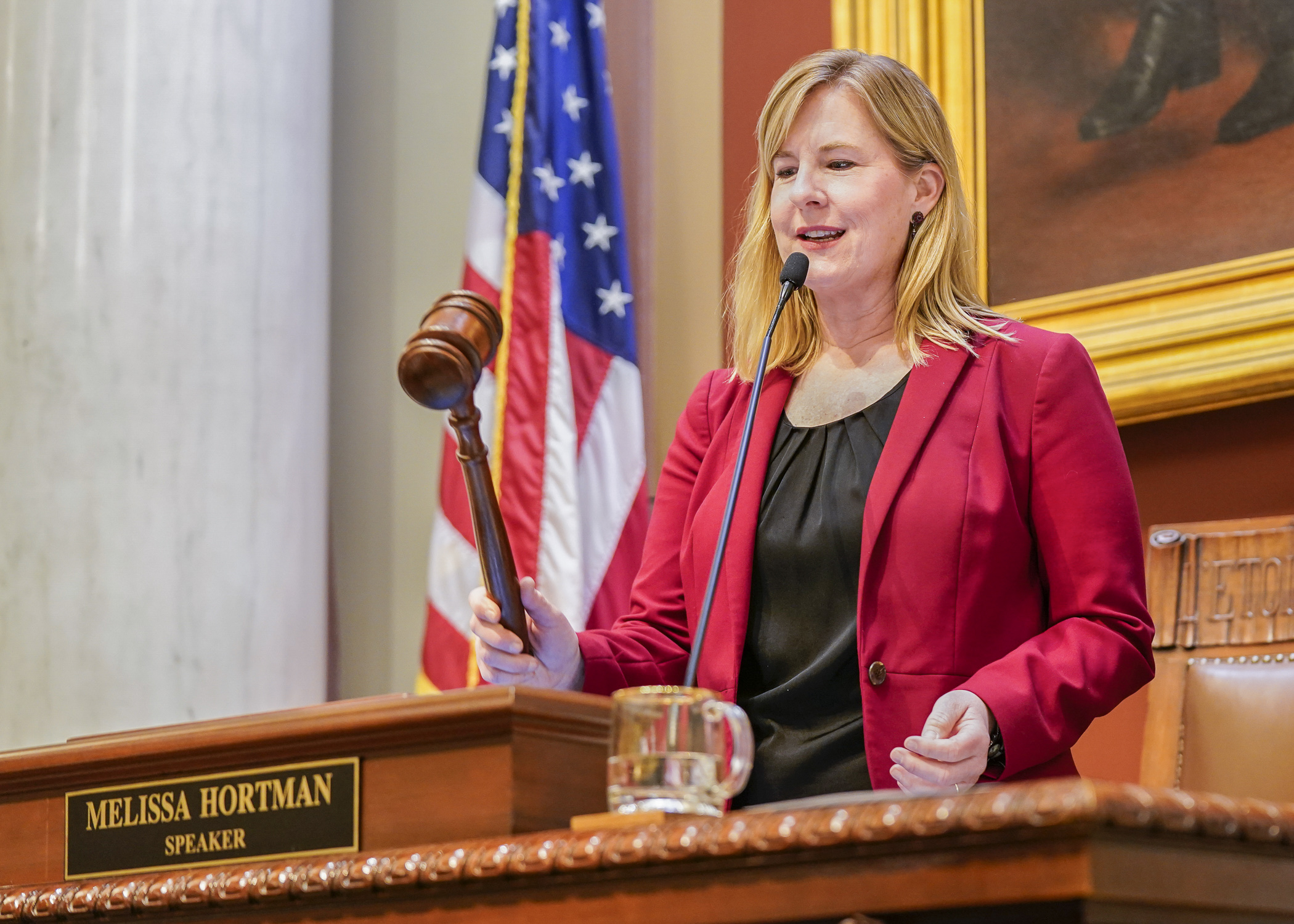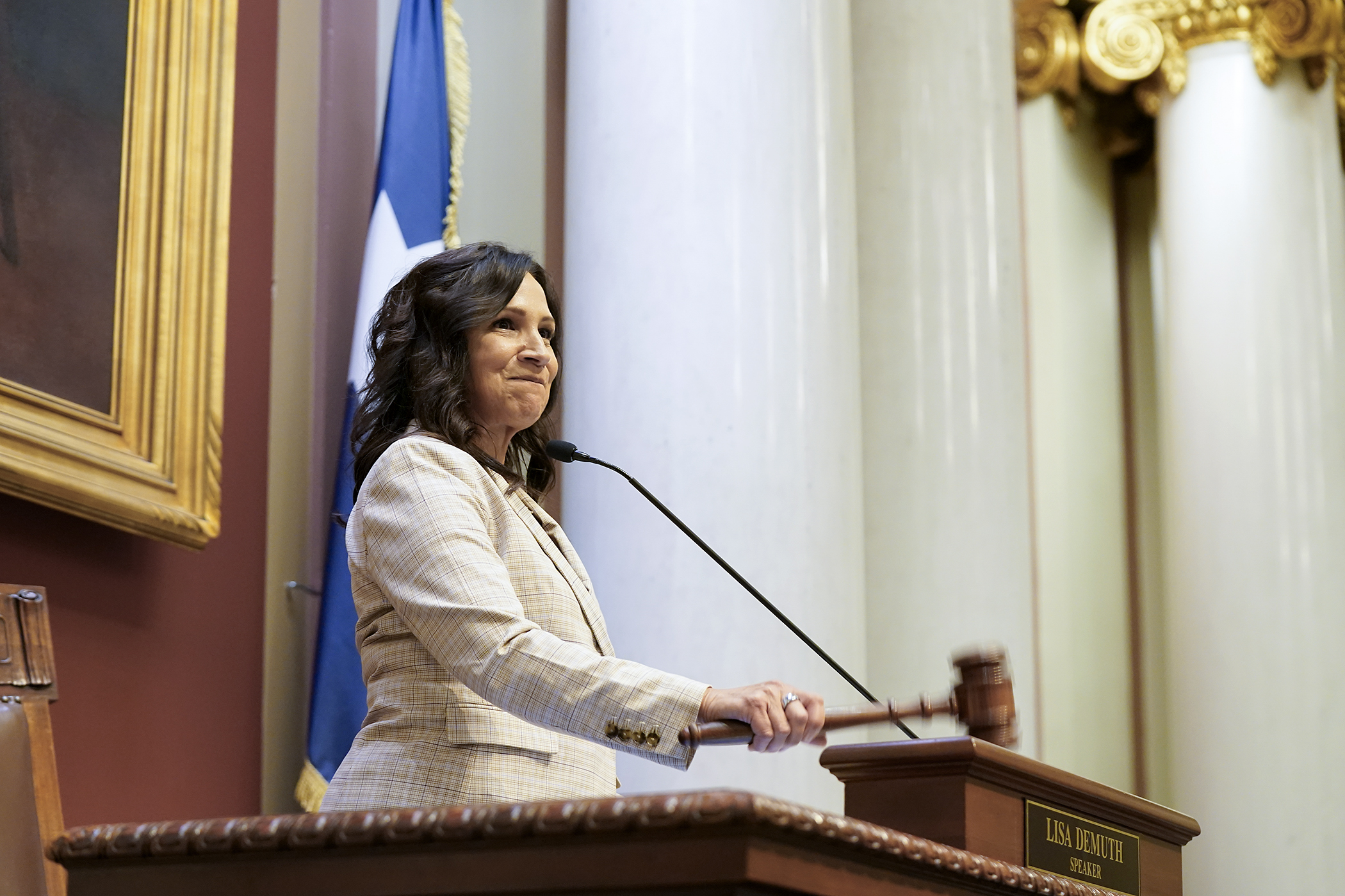‘Burning flesh smoke,’ other chemicals should be better ventilated in health care facilities, medical professionals tell lawmakers

Imagine inhaling more than pack of cigarettes at work every day when you’re not a smoker. And you’re a health care professional.
Medical staff in operating rooms can breathe in surgical smoke equivalent to smoking 27 to 30 cigarettes daily, according to the Minnesota Nurses Association. Those who spend the most time in the operating room report twice as many respiratory issues as compared to the general population.
“For surgical nurses and for the patients, they can breathe in up to 150 hazardous chemicals,” said Rep. Kaela Berg (DFL-Burnsville). “You can breathe in the HPV virus, portions of human flesh. This is like a really bad movie, except it’s real.”
She sponsors HF4011 that would require all Minnesota health care facilities to use a smoke evacuation system during any surgical procedure that is likely to generate surgical smoke. The House Labor and Industry Finance and Policy Committee approved the bill Thursday and sent it to the House Health Finance and Policy Committee.
Meant to protect surgical staff from breathing in smoke, patients, especially cesarean-section babies who can breathe in the smoke at the time of birth, will also benefit.
“If we aren’t horrified to what [surgical smoke] is doing to our nurses, I hope we’re horrified by the effects to brand new infants,” Berg said.
John Zender, a perioperative registered nurse at the University of Minnesota and retired firefighter, said surgical smoke is prevalent in approximately 90% of surgeries and is full of carcinogenic and mutagenic cells that can include over 150 hazardous gasses and vapors like benzine, hydrogen cyanide, formaldehyde, bio aerosols, dead and live cells, viruses and blood fragments.
“In a house fire, believe it or not, many of these hazardous chemicals are similar,” he said. “Thankfully, in my 20 years as a firefighter, I did not have to experience smoke from burning flesh. Only in the operating room, where we’re all expected to be clean and sterile, do I experience burning flesh smoke.”
Anne Jones, a retired perioperative nurse, said surgical masks are not designed to prevent breathing in surgical smoke.
“During larger open procedures, the entire team is working in a literal cloud of smoke,” she said. “The most efficient solution is smoke evacuation.”
According to the Association of periOperative Registered Nurses, surgical smoke can be safely and effectively eliminated with available technologies. Captured surgical smoke is disposed of as hazardous waste, and smoke evacuation does not involve construction costs or changes to a facility’s HVAC system or general room ventilation.
According to Jones, many health care facilities already have smoke evacuation equipment in place, but use of it is currently voluntary.
Related Articles
Search Session Daily
Advanced Search OptionsPriority Dailies
Speaker Emerita Melissa Hortman, husband killed in attack
By HPIS Staff House Speaker Emerita Melissa Hortman (DFL-Brooklyn Park) and her husband, Mark, were fatally shot in their home early Saturday morning.
Gov. Tim Walz announced the news dur...
House Speaker Emerita Melissa Hortman (DFL-Brooklyn Park) and her husband, Mark, were fatally shot in their home early Saturday morning.
Gov. Tim Walz announced the news dur...
Lawmakers deliver budget bills to governor's desk in one-day special session
By Mike Cook About that talk of needing all 21 hours left in a legislative day to complete a special session?
House members were more than up to the challenge Monday. Beginning at 10 a.m...
About that talk of needing all 21 hours left in a legislative day to complete a special session?
House members were more than up to the challenge Monday. Beginning at 10 a.m...